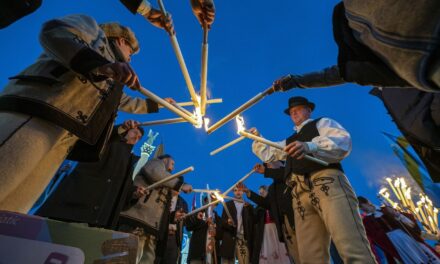After the change of empire, the Romanian authorities also tried to erase the Hungarian past of Transylvania from the names of the settlements. It didn't work, and the result often turned out to be an own goal, in addition to being ridiculous.
There are neither numbers nor numbers of settlements in Transylvania whose Romanian names make one not know whether to laugh or cry. It is rare to find a county in Transylvania that does not have a place name ending in "falău", as a tragicomic reminder of the Hungarian past, the former Hungarian world.
During the Austro-Hungarian Monarchy, there were many settlements in Transylvania that did not have an authentic Romanian name, including some that were already considered to have a Romanian majority due to the population exchange that took place during the turbulent centuries. A good example of the latter is Banpotoc in Hunyad county, where the original name Bánpatak can be easily discovered with a minimum of imagination.
After the change of empire, the Romanian authorities set about renaming the villages and towns of the newly acquired territory. They had four choices: transcribe the Hungarian name more or less phonetically, translate it, invent a new one, or leave the Hungarian settlement name.
They tried to avoid the latter solution, but in exceptional cases, such as that of Bálványos, they resorted to it. The Triszék resort escaped becoming Idolești or Idoleni, it is likely that by the time the naming committee ran out of patience and inspiration.
Phonetic transliteration resulted in the most bizarre names. As a result, Érkeserű in Bihar became Cheșereu, Csomafája in Cluj county became Ciumăfaia, Szilágynagyfalu in Szilágyság became Nușfalău, Máramarossziget became Sighetu Marmației and Haranglab in Maros county became Hărănglab.
In some cases, one might have the feeling that those entrusted with the renaming were in a funny mood, so Csekelaka became Cecălaca, or they wanted to make fun of the people of the annexed settlements, so they christened Istvánháza, located a stone's throw from Csekelaka, as Iștihaz.
Romanian versions of happiness
The Romanization fever was devoid of logic, so Alsóboldogfalva became Bodogoaia, and Felsőboldogfalva, located a few kilometers away, Feliceni. There is probably no one who can guess what the Romanian name of Boldogfalva is based on these. We tell you: Sântămărie. By the way, the village is located in Fehér County.
"The historical development of the administration of Bihar county in Romania from Trianon to the present day" that there have been cases, and not a few, where the decision of the renaming committees was overruled afterwards. Székelyhíd was first named Săcheihid, and Mihályfalva became Mihaifalău. Later, the authorities must have realized that both sounded ridiculous, so they became Săcuieni and Valea lui Mihai respectively.
There is no trace of it in the online space, and Szilágyi does not mention it either, so it may be an urban legend, but many Biharis know the alleged history of the name Kügyipuszta/Kügypuszta.
The village currently belonging to the Tamási village does not have a Romanian name, so they invented one for it, it became Chiuchiu. Later, the ridiculous name was changed to Satu Nou.
The Romanianization fever did not spare the settlements with a Romanian population either. Érkenézt was called Chiniz by the Romanian people of the village, but the new masters of the region decided that his name would be Viovozi.
Changes in the social structure also resulted in name changes. Keményfok, located on the southern border of Bihar County, inhabited by Romanians, was called Chemenfok by Romanians in the area during the monarchy. Although this name is no worse than, say, Banpot, the fact is that the Romanian administration was not satisfied with it. The village was renamed Regina Maria, but after a couple of decades this caught the eye of the communists, who in 1954 turned it into Crișana, which is the same as the Romanian name of the landscape unit. This turned out to be even shorter-lived, two years later he was given a new name again, becoming Avram Iancu.
In the case of Dicőszentmárton, ideological reasons did not play a role, yet the Romanians had a hard time deciding what the official name of the market town should be. After Trianon, the settlement with an overwhelming Hungarian majority at the time became Târnava Sânmartin, but a few years later it was named Diciosînmartin, to later be made Târnăveni, which now seems definitive.
During the time of the monarchy, the Hungarian authorities sometimes showed embarrassing creativity in naming settlements. Wolfsberg, located in the Bánság highlands, was founded by German settlers in 1828, the number of Hungarians who settled there was minimal. The official name of the village was Wolfsberg until 1811, but then the Hungarian administration changed it to Szörényordas, despite the protests of the locals. After Trianon, its official name was Volfsberg for a while, then it became Gărâna.
Featured image: Facebook/TEUS. Transilvania noastră - Our Transylvania













